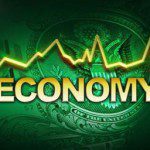At the end of June, the BIS, or the central bank for central banks, produced its annual report, which is a must-read for investors interested in the global economy, macroeconomics, as well as gold, whose price is to a large extent shaped by macroeconomic factors. What does the report imply for the precious metals market?
is a must-read for investors interested in the global economy, macroeconomics, as well as gold, whose price is to a large extent shaped by macroeconomic factors. What does the report imply for the precious metals market?
The comments above and below are excerpts from an article by Arkadiusz Sieroń (SunshineProfits.com) which has been edited ([ ]) and abridged (…) to provide a faster and easier read.
Well, the main theme is rather negative for the price of gold, as [the report] authors argue that “the global economy is not doing as badly as the rhetoric sometimes suggest”. The report states that “global growth continues to disappoint expectations but is in line with pre-crisis historical averages”.
The report is far from being too optimistic, however, as it points out a risky trinity of discomforting conditions:
- unusually low productivity growth,
- historically high global debt levels and
- remarkably narrow room for policy maneuver.
It means that the global economy is highly exposed, which is positive news for the gold market.
According to the authors, “a highly visible and much-debated sign of this discomfort has been exceptionally and persistently low-interest rates”. What we need is a shift to more robust and sustainable policies, as “the global economy cannot afford to rely any longer on the debt-fuelled growth model that has brought it to the current juncture”. We have to adopt a long-run orientation and focus more on structural policies, as “monetary policy has been overburdened for far too long”.
The take-home message… shows that the economy might not be as weak as is often suggested, as growth rates are not far away from historical averages….[As such.] the BIS threw cold water on perma-bears and gold bugs. On the other hand, the global economy remains fragile, as it is too dependent on low interest rates, monetary policy and a debt-fuelled growth model.
The lack of structural reforms and rebalancing toward a more sustainable growth model risks another global economic crisis, which, if materializes, would be supportive for the price of gold.
Disclosure: The above article has been edited ([ ]) and abridged (…) by the editorial team at  munKNEE.com (Your Key to Making Money!)
munKNEE.com (Your Key to Making Money!)  to provide a fast and easy read.
to provide a fast and easy read.
“Follow the munKNEE” on Facebook, on Twitter or via our FREE bi-weekly Market Intelligence Report newsletter (see sample here , sign up in top right hand corner)
Links to More Sites With Great Financial Commentary & Analyses:
ChartRamblings; WolfStreet; MishTalk; SgtReport; FinancialArticleSummariesToday; FollowTheMunKNEE; ZeroHedge; Alt-Market; BulletsBeansAndBullion; LawrieOnGold; PermaBearDoomster; ZenTrader; EconMatters; CreditWriteDowns;
 munKNEE.com Your Key to Making Money
munKNEE.com Your Key to Making Money
